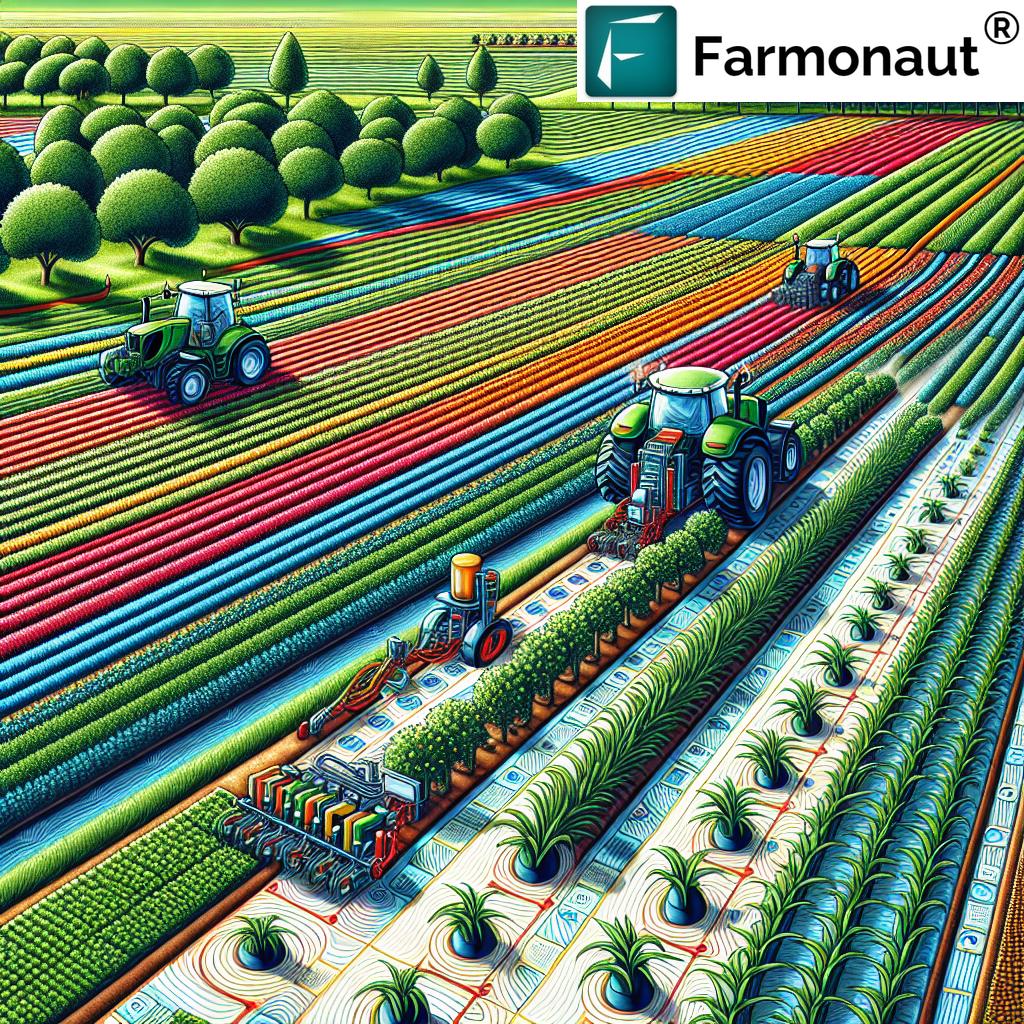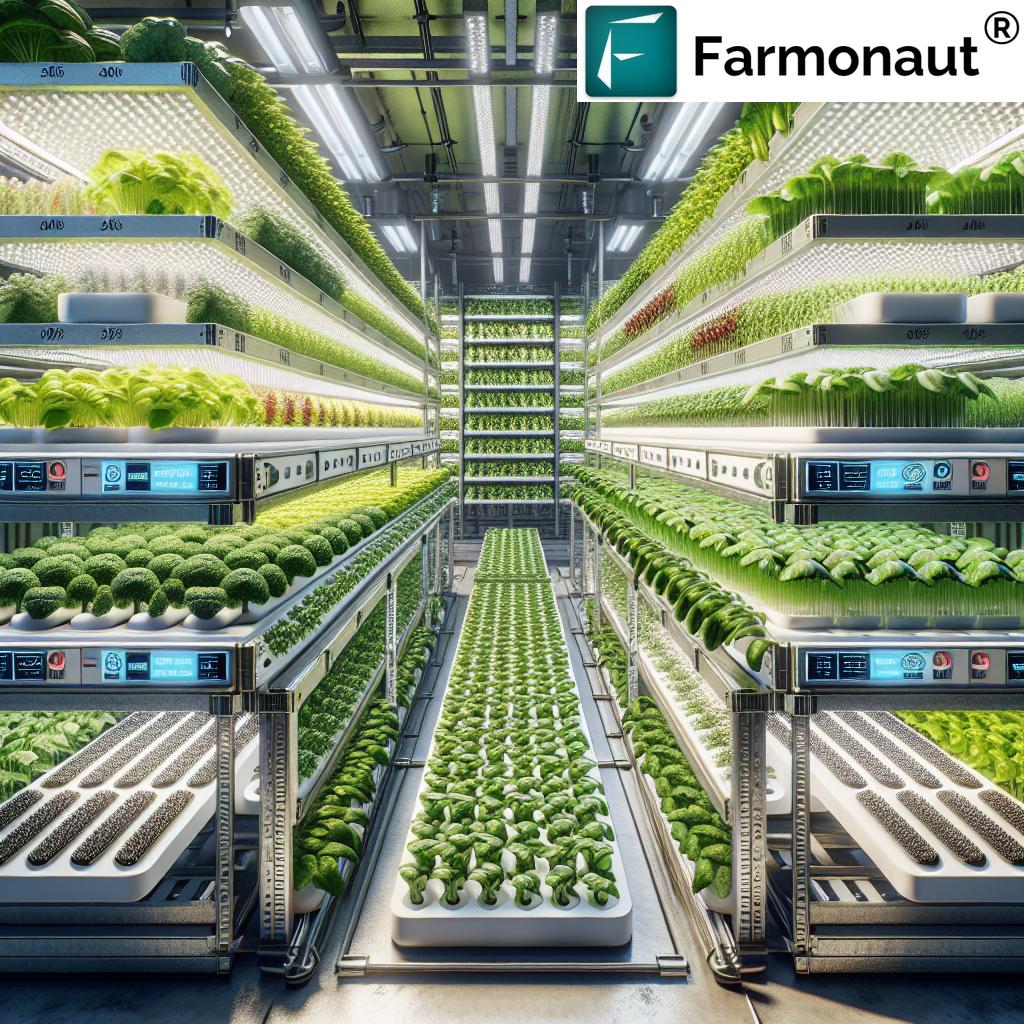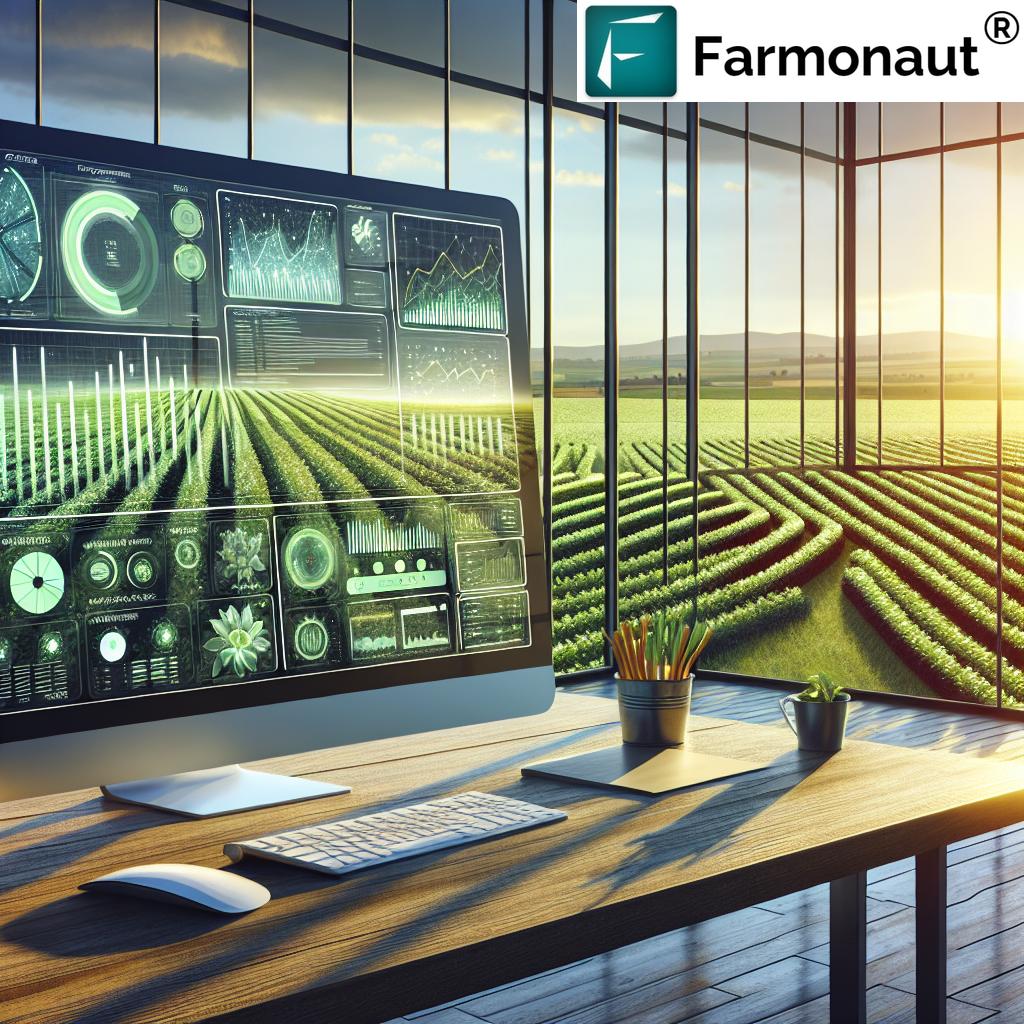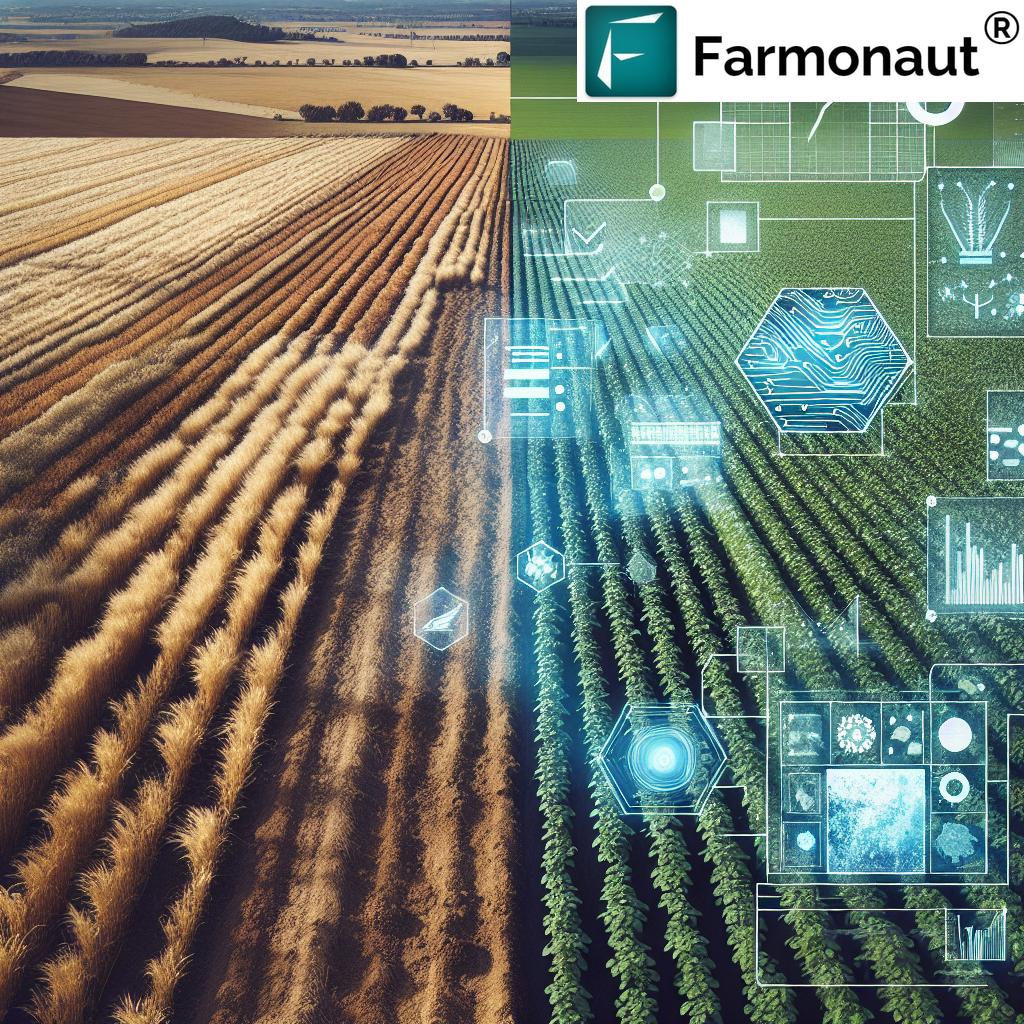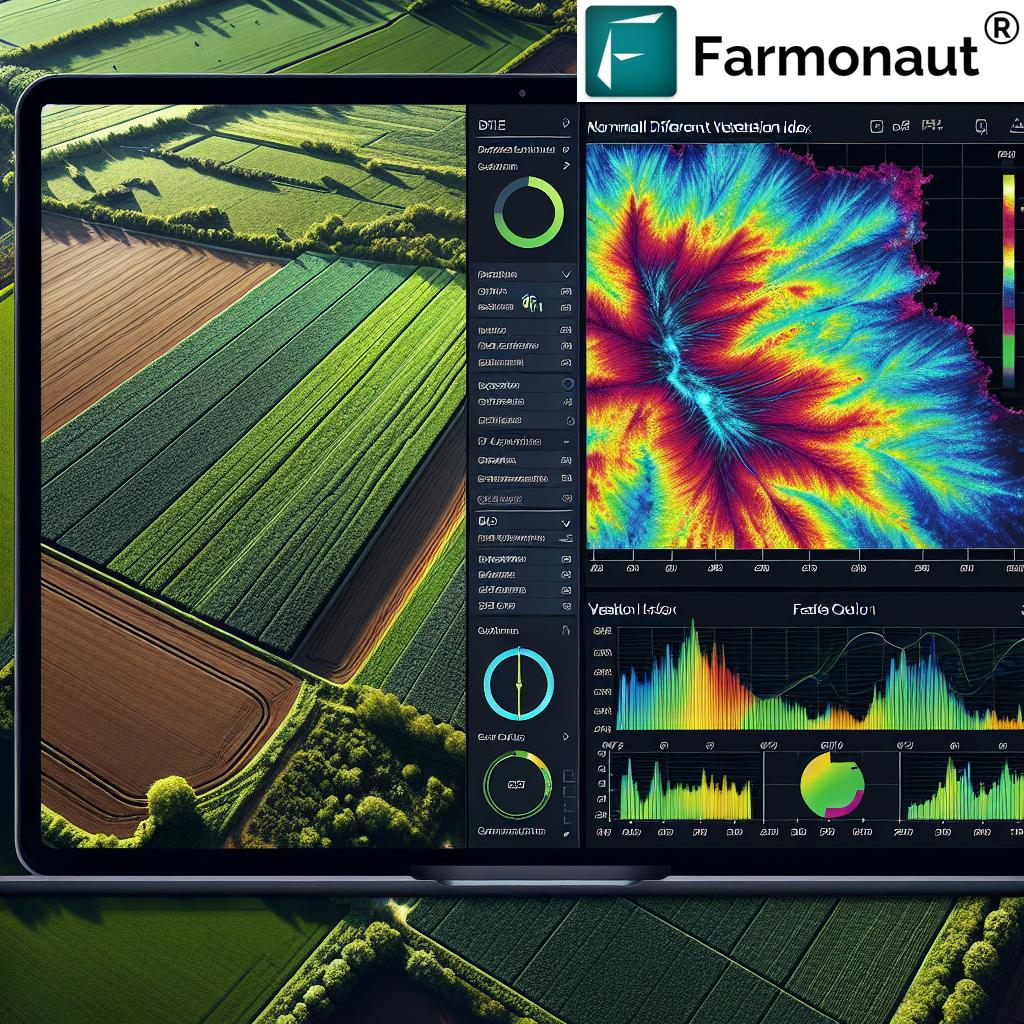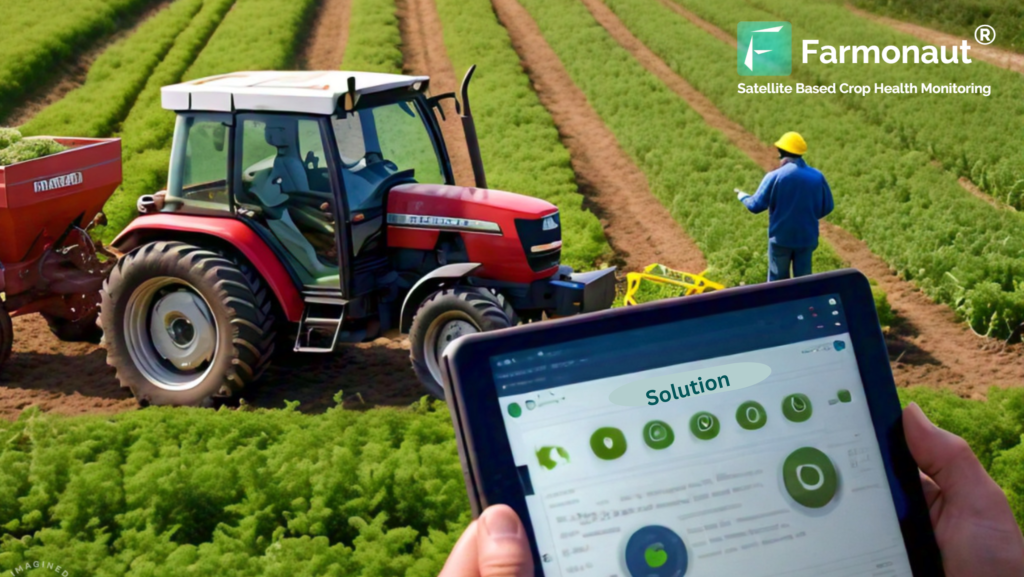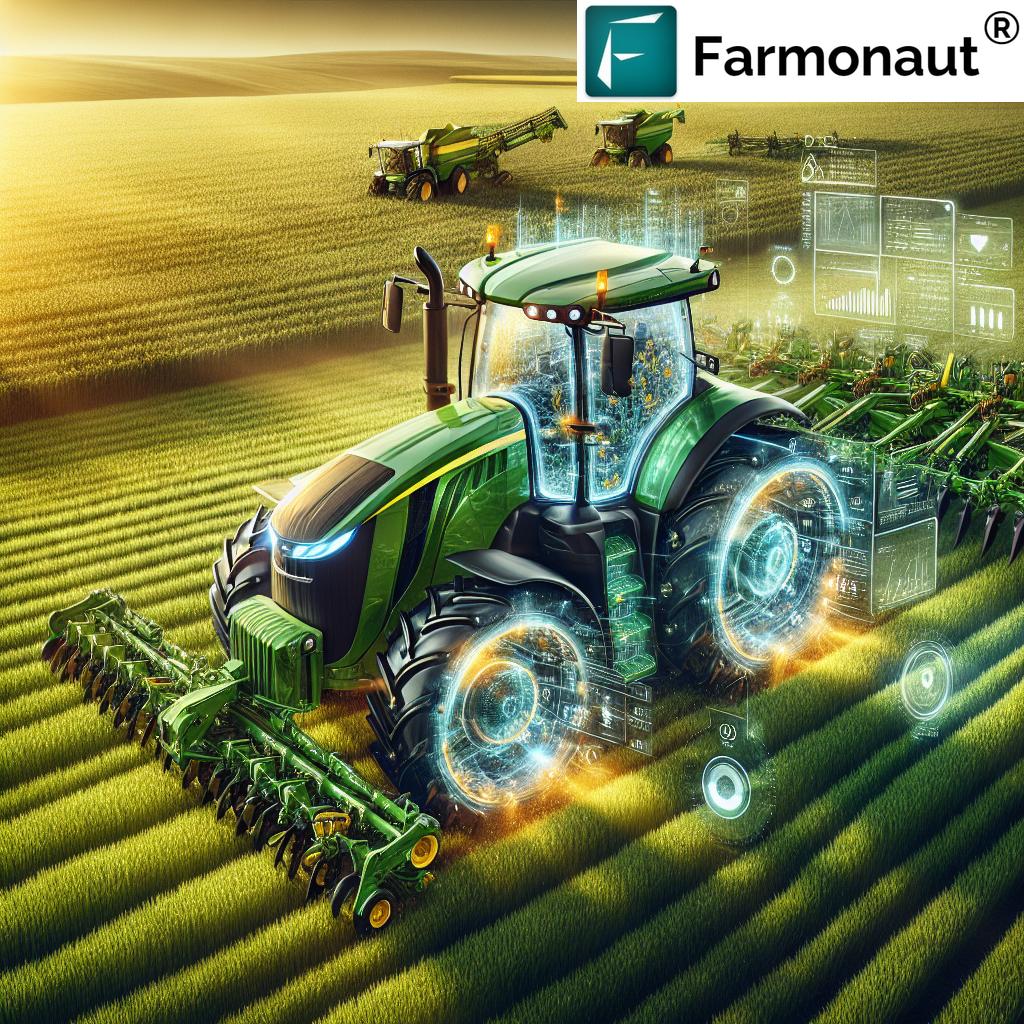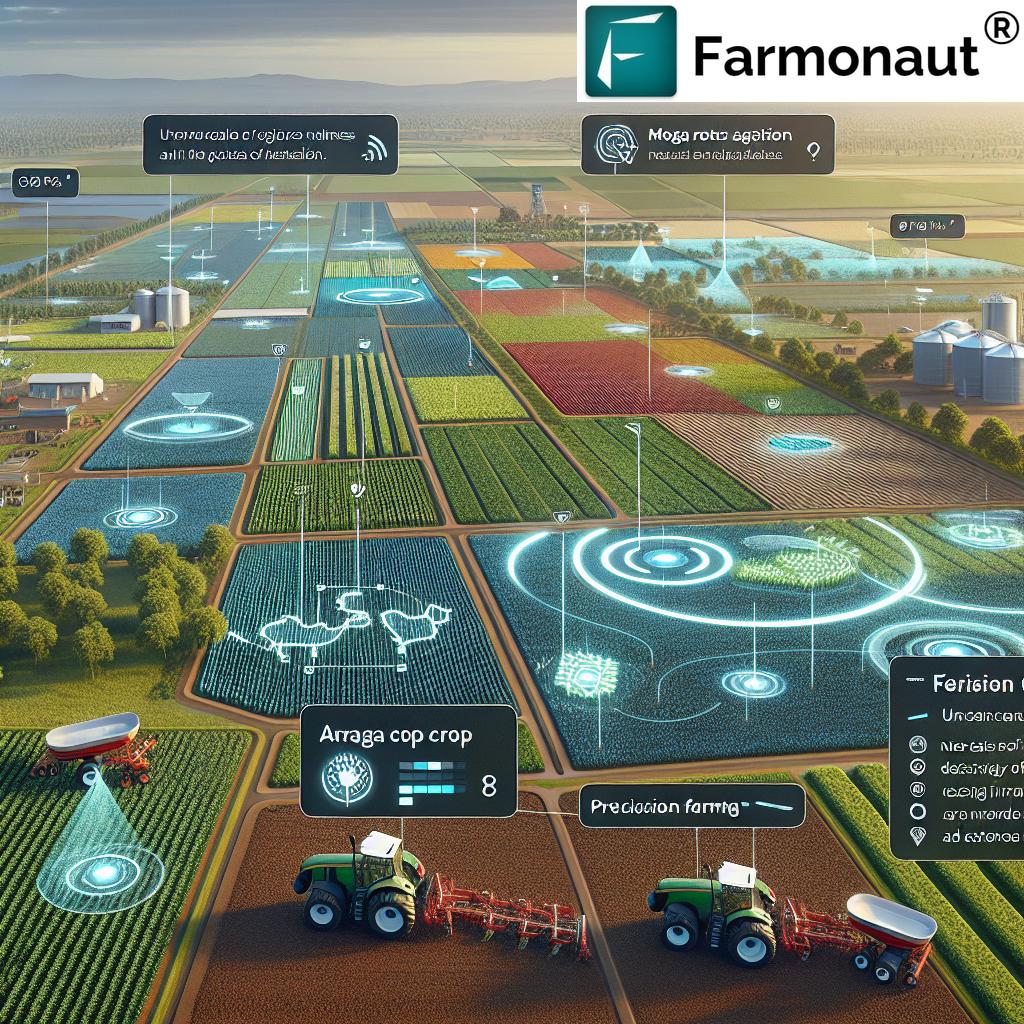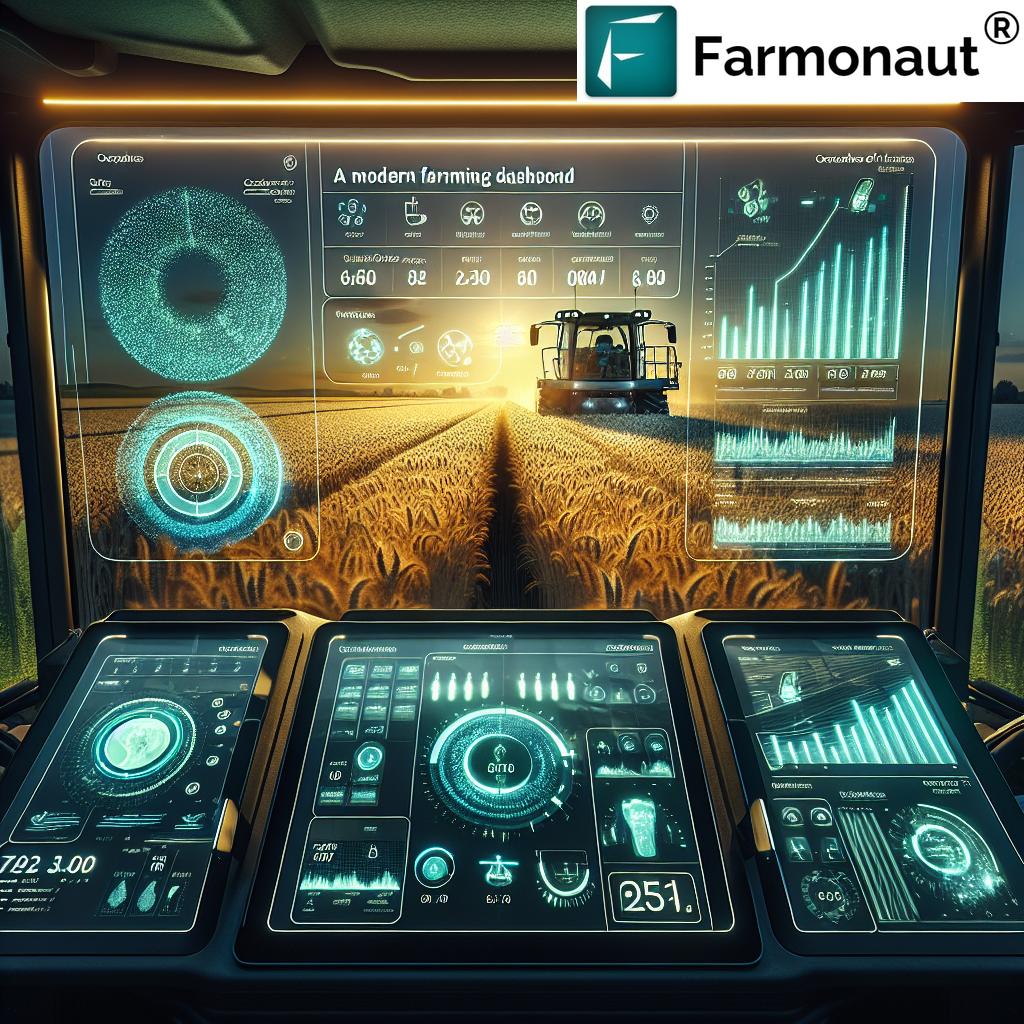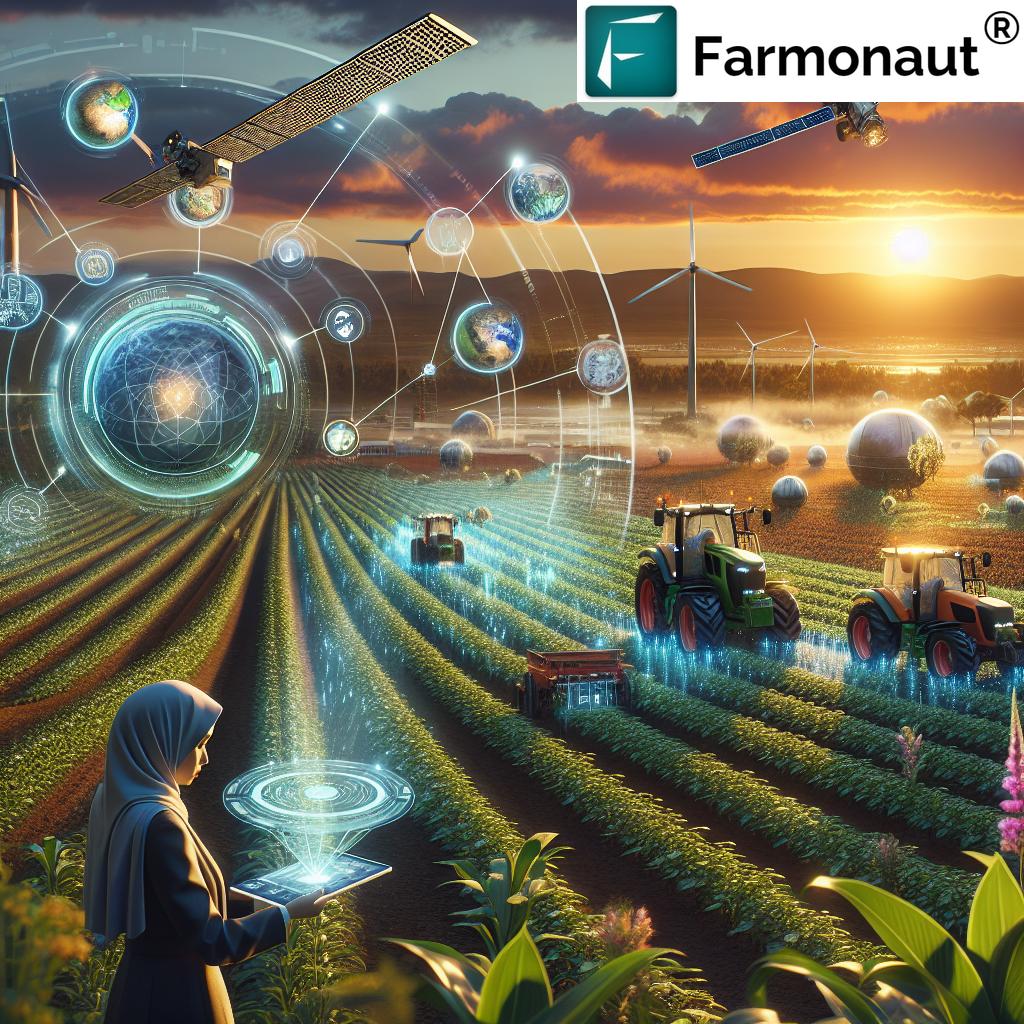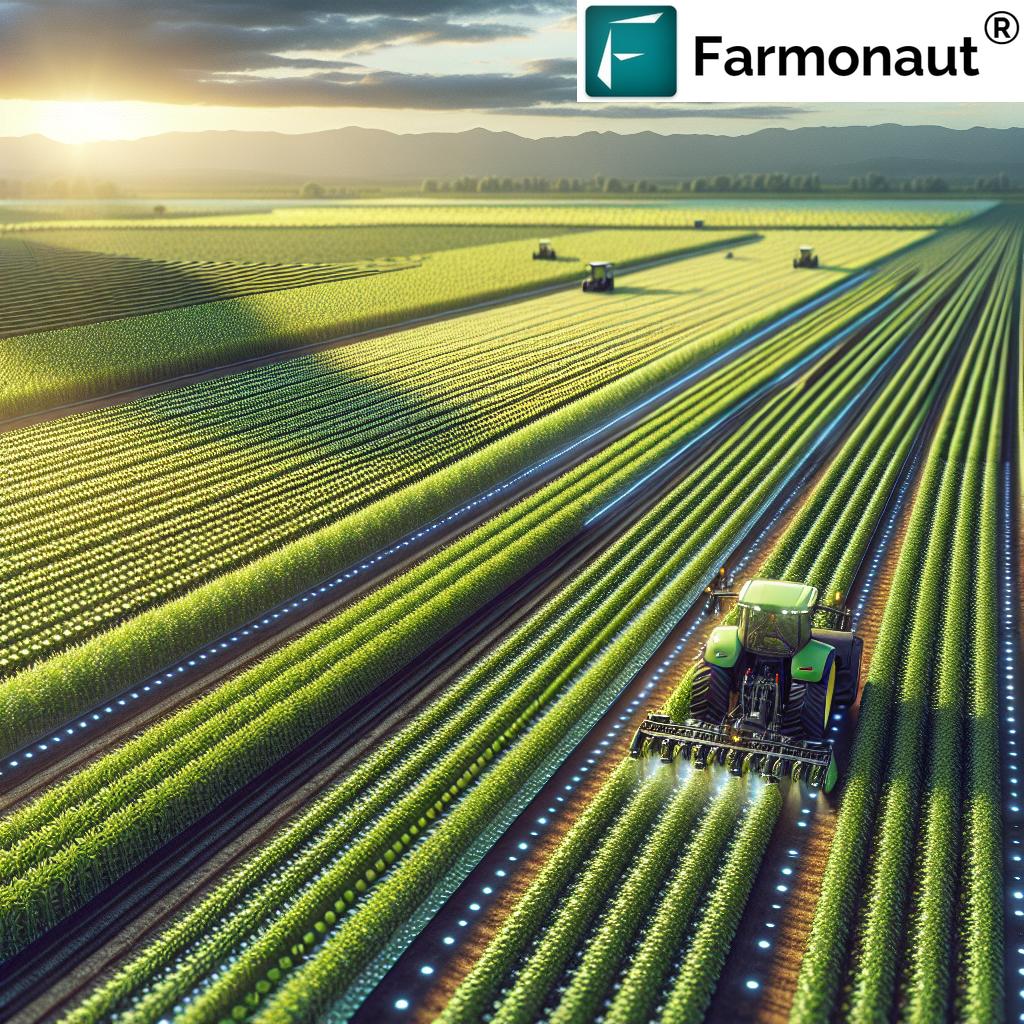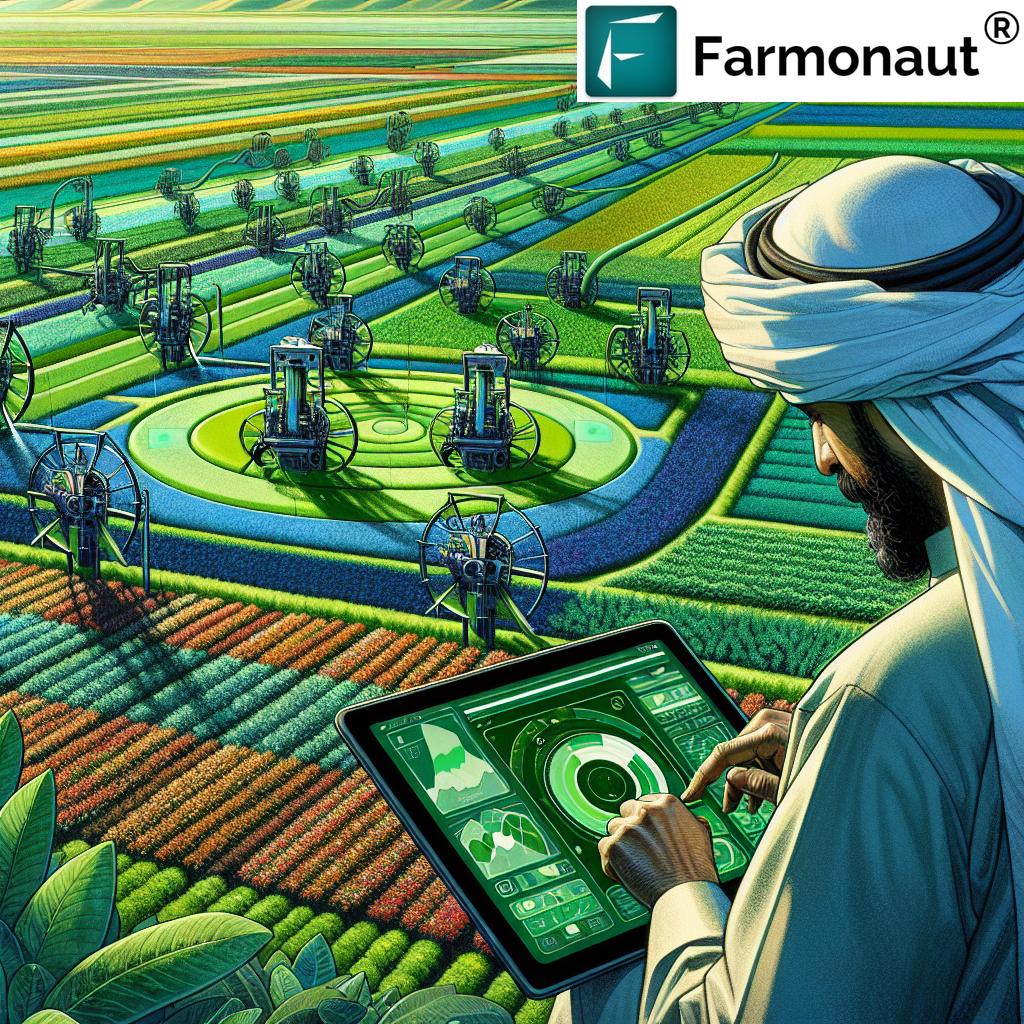Farming Technology: 7 Shocking Innovations Revealed
“AI-driven precision agriculture can increase crop yields by up to 30% compared to traditional farming methods.”
Introduction & Overview
The world of farming technology is in the midst of a transformative revolution. As farmers, agribusinesses, and researchers, we are witnessing the integration of advanced machinery, data analytics, and biotechnology into traditional agricultural practices. Our fields and farms are evolving rapidly—boosting yields, enhancing sustainability, and improving productivity for resilient, future-proof food systems.
Across the globe, challenges such as climate change, labor shortages, and the need for improved resource management have pushed us to adopt groundbreaking technologies. In this article, we unveil 7 shocking innovations that are redefining how we grow, monitor, and manage our crops. From precision agriculture to AI, robotics, and beyond, these advancements are shaping the next era of farming.
Historical Context: The Evolution of Farming Technology
To truly appreciate our current technologies, let’s revisit the evolution of agricultural tools and systems:
- Early Era: Our ancestors relied on hand tools and animal-drawn plows to till soil and plant crops.
- Industrial Revolution: The introduction of tractors, combine harvesters, and other mechanized equipment in the 19th and 20th centuries dramatically boosted our efficiency.
- Green Revolution: The mid-20th century saw the development of high-yield crop varieties, chemical fertilizers, and synthetic pesticides, enabling us to increase food production globally.
- Digital Age: Today, with the rise of digital systems, precision data analytics, satellite sensing, and AI, we are revolutionizing field management and crop monitoring for the 21st century.
Each step of this evolution has been pivotal in enhancing agricultural productivity, sustainability, and resilience to diverse challenges.
Innovation 1: Precision Agriculture
Precision agriculture employs a combination of GPS, satellite monitoring, remote sensing, and data analytics to optimize every aspect of farming—from planting and crop management to water and fertilizer application.
How Precision Agriculture Works
- We harness satellite imagery and sensors to capture high-resolution data on soil properties, crop health, and weather patterns.
- Using analytics, we analyze this information to manage field variability—identifying which sections need more or fewer inputs like water or fertilizers.
- With Variable Rate Technology (VRT), we can deploy resources precisely where they’re needed, reducing waste and improving crop yield optimization.
Benefits of Precision Agriculture
- Higher yields: More targeted management results in measurable yield increases.
- Resource efficiency: Inputs like water and pesticides are applied only where needed, minimizing costs and environmental impact.
- Data-driven decisions: Farmers make informed choices on planting, irrigation, and harvesting.
Solutions like those provided by Farmonaut use satellite-based crop health monitoring to give us real-time visibility into farm conditions and actionable insights, empowering everyday farmers worldwide.
Innovation 2: Autonomous Machinery & Agricultural Automation
The rise of autonomous machinery is transforming how we address labor shortages and maximize field operations. Technological advances have enabled the development of self-driving tractors, planters, and sprayers.
- Sensors, lidar, and AI technologies help these machines navigate diverse field conditions and perform tasks with minimal human intervention.
- Such automation allows for round-the-clock operations, ensuring that planting, watering, and even harvesting can continue without delays—increasing productivity and reducing manual workloads.
Adopting autonomous machinery leads to measurable improvements in operational efficiency—a crucial need in regions struggling with aging workforces and severe labor shortages. These innovations optimize routine tasks, giving us the freedom to focus on management and growth.
“Modern farming technology reduces water usage by nearly 20% through advanced soil and crop monitoring systems.”
Innovation 3: Controlled Environment Agriculture (CEA) & Vertical Farming
Controlled Environment Agriculture (CEA) and vertical farming have redefined what’s possible in urban agriculture and high-tech food production. By creating ideal, monitored conditions, we achieve consistent, high-quality yields.
Key Features of CEA & Vertical Farming
- Precision control: Automated systems manage light, temperature, humidity, and even air composition.
- Year-round production: Weather independence means we can produce fresh crops in any season—crucial for ensuring food security in both rural and urban centers.
- Resource efficiency: Hydroponics, aeroponics, and drip irrigation reduce water use and fertilizer inputs by recycling resources within the system.
Such sustainable agriculture practices are especially impactful in cities and regions where traditional arable land is limited. Vertical farms allow us to stack production, maximizing output per square meter while minimizing the environmental footprint.
To get the most out of such systems, advanced sensors and automation technologies are critical. These enable us to manage and monitor large-scale controlled environment operations with unparalleled accuracy.
Innovation 4: Robotics and Automation in Modern Farming
Robotics is revolutionizing the scope of agricultural automation. We’ve seen the evolution from fixed automation in packing plants to mobile robotic arms in fruit-picking, weeding, and crop management.
Applications of Robotics in Agriculture
- Robotic harvesters: Mimic the dexterity and selectivity of human hands to pick fruits and vegetables.
- Autonomous weeding robots: Use computer vision and sensors to identify weeds and remove them precisely, reducing chemical herbicide use.
- FarmBot: An open-source tool enabling automated small-scale farming—from planting to watering and monitoring.
These automations not only address labor challenges, they help reduce costs, improve field efficiency, and limit harmful inputs. By integrating with data-driven platforms like Farmonaut, robotic systems can receive real-time insights to further optimize their tasks and scheduling.
Fleet management solutions, such as those outlined here, allow us to keep track of agricultural machinery, schedule maintenance, and maximize the deployment of our resources.
Innovation 5: Artificial Intelligence in Agriculture
Artificial intelligence (AI) is the brain behind many recent advances in crop management and yield optimization. With access to vast amounts of data from sensors, weather feeds, and satellite imagery, AI models can reveal patterns and insights that were previously invisible.
AI Applications in Farming
- Weather and Disease Forecasting: We can now predict weather patterns, upcoming droughts, disease outbreaks, and pest infestations—helping us respond rapidly and reduce crop loss.
- Decision Support Systems: AI-driven advisory platforms like Farmonaut’s Jeevn AI Advisory System deliver personalized crop management recommendations and weather alerts in real-time.
- Pest and Disease Recognition: Using machine learning, we identify and manage threats swiftly, reducing dependency on broad-spectrum chemical pesticides.
Integrating AI with precision agriculture enables us to create smart farming solutions that are affordable, scalable, and accessible—even for individual farmers. Our ability to analyze complex variables leads directly to increased yields and ensures resource efficiency.
Explore how our satellite-driven crop monitoring solutions can help financial institutions verify yield and risk remotely, improving access to agricultural loans and insurance.
Innovation 6: Nanotechnology in Agriculture
Nanotechnology in agriculture offers a new frontier for monitoring soil health, optimizing irrigation, and detecting crop threats at the molecular level.
- Nanosensors embedded in the soil can measure moisture levels, nutrient concentrations, and pH in real time.
- Graphene-based nanosensors target specific ions like nitrate and phosphate, informing optimal fertilizer application.
- Pathogen detection: Early-warning nanosensors alert us to pests and diseases, facilitating targeted intervention and reducing chemical use.
Nano-enabled devices make it possible to monitor fields remotely, optimize inputs, and shift to a more resource-efficient, sustainable style of crop management. This kind of monitoring is integral to sustainable carbon footprint management in agriculture.
Innovation 7: Biotechnology in Farming & Genetic Engineering
Biotechnology in farming represents decades of progress in improving crop traits through genetic engineering. Today, we can develop genetically modified organisms (GMOs) with characteristics previously out of reach, such as:
- Pest resistance: Engineered crops reduce or eliminate the need for chemical pesticides, protecting the environment and reducing farmer costs.
- Drought and salinity tolerance: Biotechnology enables crops to thrive in harsh climate conditions, supporting stable food production even under climate change.
- Improved nutrition: Enhanced food value and shelf life.
The continued development of biotechnological solutions is vital for sustainable agriculture—helping us reduce resource inputs, support food security, and minimize environmental impact.
Comparative Innovations Impact Table
| Innovation Name | Technology Type | Primary Application | Estimated Yield/ Productivity Improvement (%) |
Sustainability Impact | Key Benefits |
|---|---|---|---|---|---|
| Precision Agriculture | Remote Sensing, Data Analytics, VRT |
Field management, input optimization | 10–30% | Reduces waste, lowers chemical inputs | Boosted yield, efficient resource use, informed decisions |
| Autonomous Machinery | AI, Sensors, Robotics | Automated planting, spraying, harvesting | 10–20% | Decreases fuel/labor use, 24/7 efficiency | Faster cycles, labor independence, operational safety |
| Controlled-Environment Agriculture (CEA), Vertical Farming | IOT Sensors, Automation Systems | Urban/indoor food production | Up to 50% | Significant water/land footprint reduction | Year-round crops, maximized output per sq meter |
| Robotics and Automation | Robotics, Computer Vision | Harvesting, weeding, planting | 10–25% | Less chemical input, safer work environment | Labor savings, consistency, minimal loss |
| Artificial Intelligence in Agriculture | AI, Machine Learning, Big Data | Advisory, prediction, risk analysis | 10–30% | Proactive decisions, reduces resource misuse | Smart insights, early warnings, yield optimization |
| Nanotechnology | Nanosensors, Nanomaterials | Soil health monitoring, input precision | 5–15% | Minimizes fertilizer/pesticide runoff | Real-time data, “invisible” management, sustainability |
| Biotechnology & Genetic Engineering | Genetic Engineering, Biotechnology | Crop trait development | 15–25% | Less chemical dependency, resilient crops | Food security, climate resilience, improved nutrition |
Farmonaut Technology Overview & Smart Farming Solutions
Farmonaut stands at the forefront of the farming technology revolution by deploying an integrated, satellite-based farm management platform accessible via Android, iOS, web app, and API. Our platform is designed to offer precision agriculture solutions that empower farmers, agribusinesses, government agencies, and NGOs worldwide.
- Satellite Crop Health Monitoring: Our multispectral analytics tools deliver real-time insights on vegetation health (NDVI), soil moisture levels, and other vital field parameters. This helps us make data-driven decisions in planting, irrigation, and fertilizer application.
- Jeevn AI Advisory: Powered by artificial intelligence in agriculture, this feature provides ultra-personalized crop advice, weather forecasts, and actionable strategies for yield and resource management.
- Blockchain Product Traceability: Utilizing blockchain, we bring supply chain transparency for agricultural products, ensuring consumers and companies can trust the provenance and handling of their food and raw materials.
- Fleet & Resource Management: Through our fleet management solution, we track farm machinery, optimize asset utilization, and ensure proactive maintenance—all crucial for modern farm operations.
- Carbon Footprinting: Our carbon emission tracking tool enables agribusinesses to monitor, report, and reduce their environmental impact in real time, aligning with sustainability goals.
Flexible Access for All
The Farmonaut business model delivers scalable, cost-effective precision agriculture for smallholder farmers and large enterprises alike. Via web and mobile apps, users can access real-time monitoring, analytics, and decision support tools wherever they are. Our API and developer documentation make integration simple for agritech businesses and researchers.
We also equip financial institutions to use satellite verification for crop loans and insurance, reducing risk and ensuring hassle-free financing for the end users in the agricultural sector.
Farming Technology Challenges and Sustainable Agriculture Practices
While advanced farming technologies bring vast benefits, we must address several challenges to ensure a just, sustainable, and resilient food system:
- High initial cost: Many modern systems require upfront investments, potentially excluding smallholders without financial support.
- Job displacement: As automation replaces labor-intensive tasks, there’s risk for workers—highlighting the need for retraining and upskilling.
- Environmental impact: High-tech infrastructure like vertical farms can be energy-intensive, requiring renewable energy solutions to maximize sustainability.
- Equitable access: For agri-innovation to truly succeed, technology must be democratized—affordable, accessible, and adaptable across regions.
- Data privacy: Managing sensitive agricultural data responsibly is key for trust and regulatory compliance.
Promoting Sustainable Practices & Agroecology
- Agroecology: Blending scientific research with local wisdom, agroecological practices improve biodiversity, enrich soil health, and boost farm resilience.
- Resource conservation: Smart irrigation, integrated pest management, and no-till farming all lower inputs and rebuild natural systems.
- Climate adaptation: Continued technology development is essential for guiding farmers through changing climate conditions.
Our mission must be to foster innovation that enhances productivity while promoting long-term environmental sustainability—creating viable livelihoods and nutritious food for future generations.
Global Innovations in Agriculture
Around the world, countries are embracing technology to solve unique local challenges:
- Australia: Leveraging sensors and apps to monitor livestock, boost animal health, and adapt to climate change. Innovations include microbial spore soil supplements and robotic pollinators.
- India: AI-powered chatbots and satellite-based advisory services connect millions of farmers, promoting higher yields and better resource management.
- Africa: Regenerative agriculture initiatives—such as those near Mount Kenya—use a blend of traditional and modern practices to restore degraded land and enhance food security.
This global movement toward smart, data-driven, and sustainable agriculture practices is essential in achieving food security and climate resilience.
Discover more about satellite-driven crop plantation and forest advisory for regions requiring large-scale planning and climate adaptation.
Farmonaut Subscription Plans
Ready to take your farm to the next level? Explore our transparent and flexible subscription options:
Farmonaut subscriptions are designed for all farm sizes—with options tailored for individuals, large agribusinesses, and research/government users. Enjoy affordable precision agriculture with minimal hardware investment.
Frequently Asked Questions (FAQ)
-
What is precision agriculture and how does it work?
Precision agriculture uses satellite, GPS, sensors, and data analytics to monitor, manage, and optimize the use of resources on farms. It enables precise application of water, fertilizers, and pesticides where needed, thus maximizing yield and minimizing waste. -
How does Farmonaut help in agricultural productivity?
Farmonaut provides real-time, satellite-based analytics for crop health monitoring, soil moisture levels, weather predictions, and AI-driven advisories, allowing farmers to make data-driven decisions that improve yields, resource efficiency, and sustainability. -
How can small farmers benefit from these technologies?
Affordable solutions like Farmonaut’s satellite monitoring and AI-driven tools lower the barrier to entry, allowing smallholders to access insights usually reserved for large agribusinesses and apply sustainable agriculture practices in their own fields. -
What is controlled environment agriculture (CEA)?
CEA is a farming method where crops are grown under managed conditions (light, temp, humidity), typically in greenhouses or indoor vertical farms, to ensure consistent, high-quality production and reduced resource use. -
Is data privacy ensured on Farmonaut?
Yes. Farmonaut prioritizes data privacy, ensuring user information and farm analytics are securely managed and compliant with regulations. -
How does agricultural automation affect rural jobs?
While automation optimizes operations and compensates for labor shortages, it necessitates upskilling rural workers for technology-based roles and data management positions. -
Where can I integrate Farmonaut’s API?
Farmonaut’s powerful API can be integrated into farm management systems, mobile/web apps, agri-research tools, and agricultural departments for automated, real-time satellite and weather data. -
What sets Farmonaut apart from other farm tech solutions?
Farmonaut’s reliance on satellites eliminates the need for expensive ground hardware, provides large-scale real-time analytics, and incorporates AI, blockchain, and resource management tools from a single interface, making it uniquely scalable and affordable.
Conclusion: The Future of Farming Technology
As we navigate unprecedented environmental, economic, and social challenges, farming technology has emerged as the engine for a resilient and sustainable future. By embracing precision agriculture, agricultural automation, artificial intelligence, nanotechnology, and biotechnology, we are rewriting the rules of food production—improving productivity, enhancing sustainability, and preparing for the complexities of the 21st century.
Solutions like Farmonaut democratize access to these technologies—making them affordable, reliable, and accessible for farmers and agri-enterprises across the globe. By leveraging real-time data, advanced analytics, and blockchain-enabled transparency, we can make informed, responsible decisions for the benefit of people and the planet. Now is the time to combine cutting-edge innovation and agroecological wisdom for vibrant, sustainable agriculture practices worldwide.
Step into the next generation of farming technology—empower your fields, optimize your yields, and drive sustainable growth with Farmonaut.


